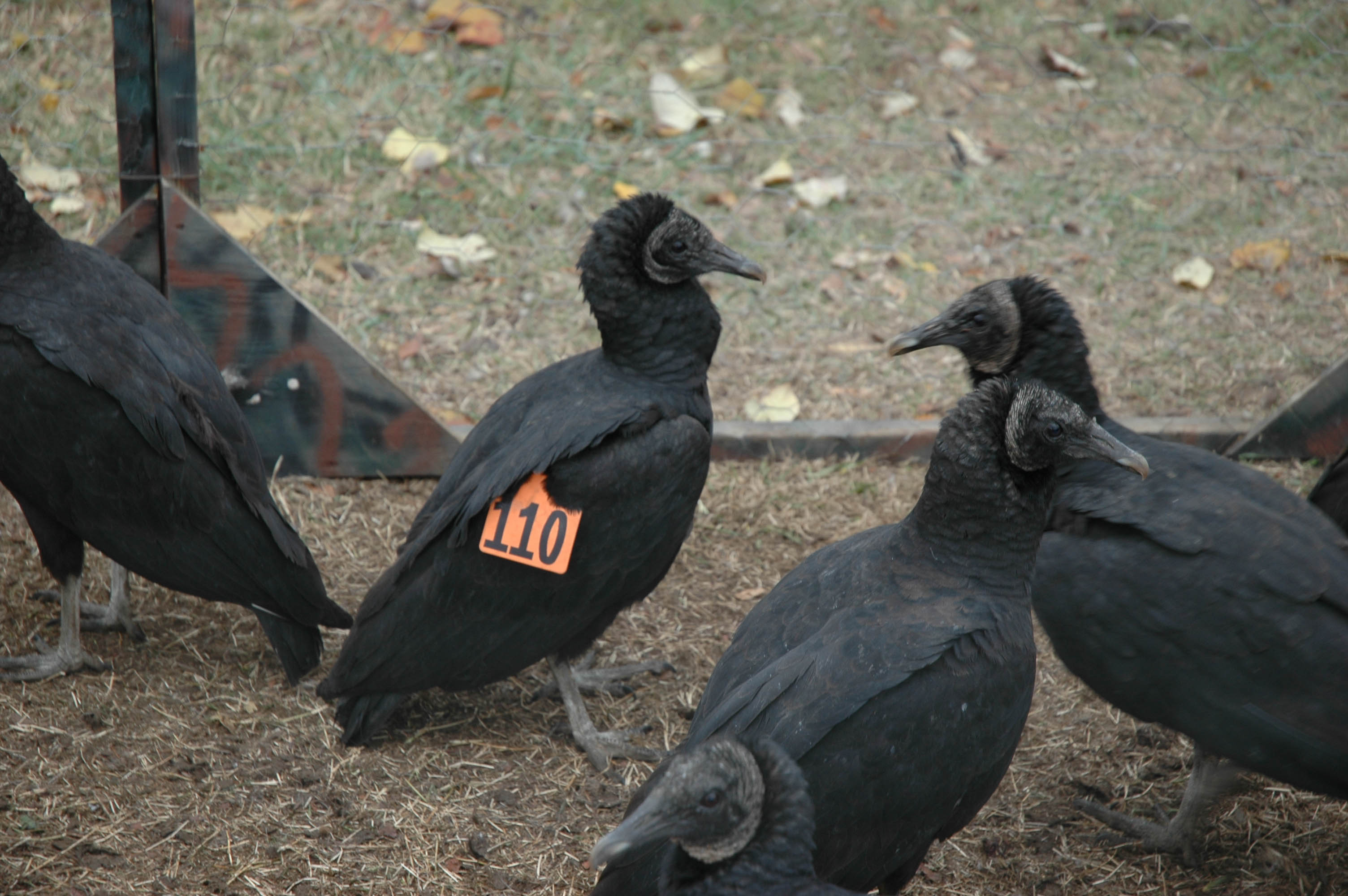CCB investigates human – vulture conflicts
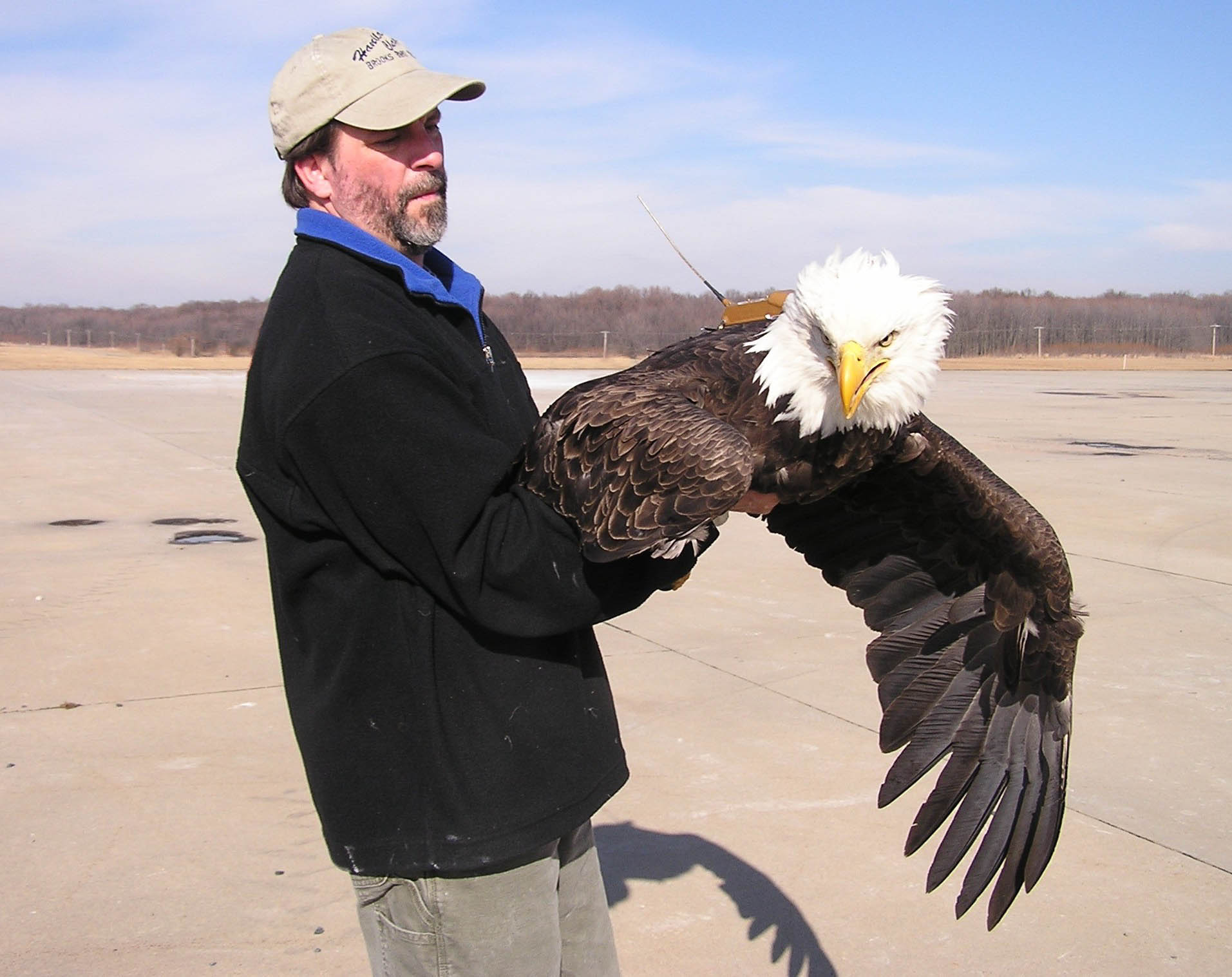
Tracking bald eagle movements throughout the Chesapeake and beyond
June 1, 2008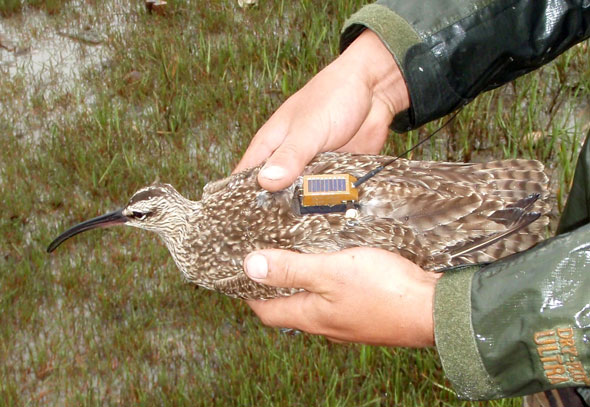
Migrant whimbrel tracked on 5,000 kilometer, transcontinental flight
June 2, 2008
Story by Bryan Watts & Adam Duerr
June 2, 2008
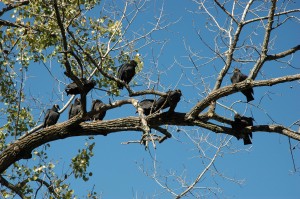
Black vultures roosting. Photo by the Center for Conservation Biology.
In recent decades, managing conflicts between wildlife populations and humans has become a growth industry. Whether it is the impact of expanding deer herds on agricultural crops, or cormorants depleting southern fish farms it is increasingly difficult for managers to strike a balance between social interests and the health of wildlife populations. The Center for Conservation Biology is partnering with Virginia Department of Game and Inland Fisheries and the Virginia state office of U.S. Department of Agriculture Wildlife Services to collect and analyze data on black vulture populations. This project is focused on developing and assessing techniques to alleviate property damaged by black vultures that use a roost in Dutch Gap, Virginia and cause property damage at a power plant and Chesterfield County boat ramp.
Black vultures are social birds that congregate at communal roosts at night and loafing areas during the day. Vulture feces accumulate in roosting and loafing areas, which can require expensive cleaning for property owners. Black vultures also have a habit of picking at, removing, and consuming rubber, roof tiles, and other artificial objects. For example, they have removed windshield wiper blades, rubber seals, and vinyl from vehicles and boats and asphalt shingles and rubber roofing from buildings. Vultures at Dutch Gap have damaged vehicles, boats, and trailers at the boat ramp and Dominion has incurred expensive costs to clean vulture feces from their Chesterfield Power Station. Black vultures are also known to kill and eat newborn livestock in rural areas.
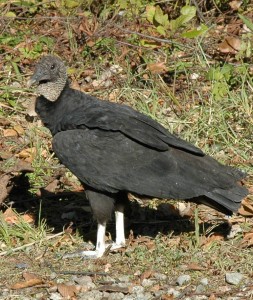
Close-up of a black vulture. Photo by Ray Fernald/VDGIF.
Our research efforts at Dutch Gap have included marking black vultures with patagial (wing) tags and monitoring the number of vultures in this area. In November 2007, Adam Duerr and Fletcher Smith of the Center worked with personnel from the Department of Game and Inland Fisheries and Wildlife Services to capture and tag 100 black vultures. The Department and Wildlife Services then initiated a year-long monitoring program that was designed in collaboration with Adam Duerr. During monitoring, biologists count vultures at Dutch Gap and record codes from tagged vultures that are observed. When vultures are found in areas where they have damaged property in the past, biologist use pyrotechnics, paintball guns, and limited lethal take to haze or scare vultures from the area.
The monitoring program will provide several key sources of information for project partners. Counts of vultures in the area will provide data on seasonal use of Dutch Gap by black vultures. Patterns of use by tagged vultures will provide information on daily and seasonal turnover of individual vultures in the population. Combining these sources of information will allow us to determine the total number of vultures that move through the Dutch Gap roost over the course of a year, and thus define the size of the vulture population that uses Dutch Gap. Individually tagged vultures have also provided an opportunity to define the geographic range of vultures from Dutch Gap. People have provided observations of tagged vultures from many locations in Virginia. These observations have been reported through a website hosted by the Department of Game and Inland Fisheries and have included observations of vultures moving as far as Charlottesville and Virginia Beach.
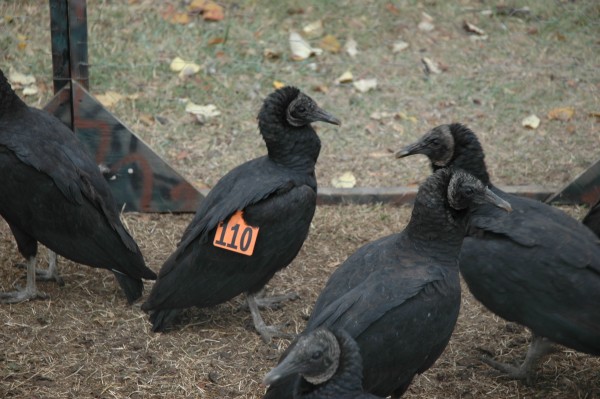
A black vulture with a numbered wing-tag. Photo by Ray Fernald/VDGIF.
The partnership established for this project has provided a mechanism where monitoring and analytical expertise from the Center is paired with management expertise and responsibility from the Department of Game and Inland Fisheries and Wildlife Services. This partnership can expand to provide data and analysis for vulture management beyond Dutch Gap, which is particularly important because the black vulture population in the Eastern U.S. has increased in size over the last few decades as have incidents of damage associated with this species. As with all projects conducted by the Center, our interests are the long-term conservation of birds. Black vultures are long-lived and relatively slow reproducing species that, if over-exploited to reduce damage, would take a long time to recover. Therefore, the Center is committed to providing the best data and scientific support to managing damage associated with this species while working to ensure that the populations are not harmed in the long term.
Report observations of tagged black vultures to the Federal Bird Banding Lab at reportband.gov
Related posts
October 8, 2025
October 8, 2025
October 8, 2025

